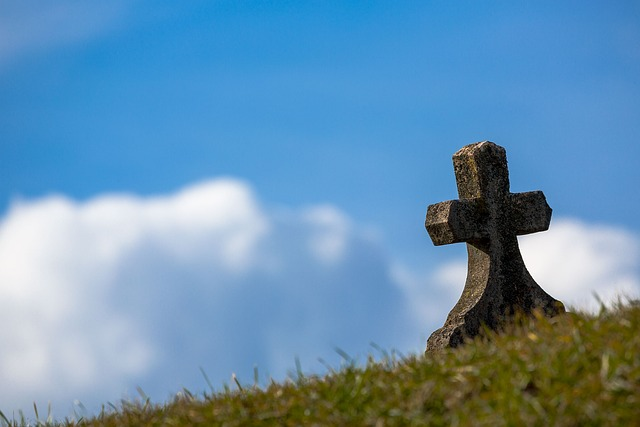
All Saints’ Day, known locally as “Undas” or “Araw ng mga Patay” (Day of the Dead), is one of the most significant and deeply rooted traditions in the Philippines. A public holiday in the Philippines, this occasion allows Filipinos to remember and honor their dead relatives in a solemn manner.
Unlike many Western countries where Halloween is celebrated with costumes and spooky decorations, the Philippines’ approach to the Day of the Dead is rooted in a mix of Catholicism, indigenous beliefs, and close-knit family values. Let’s explore how this remarkable commemoration unfolds.
The Historical and Religious Significance
All Saints’ Day, also known as All Hallomas, All Hallows Day, Hallows Tide, or Hallowmas, is celebrated on November 1st in many Catholic countries worldwide. It is a special non-working holiday in the Philippines. This year, All Saints’ Day falls on a Wednesday.
This occasion holds immense importance in the predominantly Catholic country, as it is dedicated in honoring all the saints, known and unknown.
While All Souls’ Day, celebrated on November 2nd, is explicitly dedicated to departed relatives, All Saints’ Day commemorates all saints’ holiness and sanctity. Celebrations like Halloween parties or Trick O’ Treat will happen on the First Sunday of the month.
A Blend of Indigenous Beliefs and Catholicism
The roots of All Saints’ Day in the Philippines can be traced back to the pre-colonial period when indigenous Filipinos had traditions and beliefs about honoring the dead. These customs often involved rituals and offerings to ensure the peaceful transition of departed souls to the afterlife.
When Spanish explorers arrived in the 16th century and introduced Christianity, the native practices merged with Catholicism, the Spanish colonial authorities recognized the potential for syncretism, and thus, All Saints’ Day was officially integrated into the Christian calendar.
The Influence of Spanish Colonialism
Spanish colonialism played a pivotal role in shaping how Filipinos celebrate All Saints’ Day in the Philippines. The Spanish authorities encouraged the construction of cemeteries near churches, where the Catholic faithful could visit and pray for their departed loved ones.
These cemeteries, known as “camposanto” or “campo santo,” became the focal point of All Saints’ Day observances. The Spanish influence is also evident in the use of the term “Undas,” derived from the Spanish “honrar,” meaning “to honor.”
Simultaneous Commemoration of All Saints’ and All Souls’ Day
In the Philippines, All Saints’ Day is often followed by All Souls’ Day on November 2nd. While All Saints’ Day is dedicated to honoring Christian saints and deceased loved ones who have already reached heaven, All Souls’ Day is focused on praying for the souls of those still in purgatory.
This dual commemoration creates a unique and extended period of reflection and remembrance. Families visit cemeteries over both days, with November 1 dedicated to the veneration of saints and November 2 devoted to prayers for the souls of the departed.
The Importance of Family
Family plays a central role in Filipino culture, particularly on All Saints’ Day. In the weeks leading up to the holiday, families gather to clean and decorate the gravesites of their loved ones.
This process, known as “panagbenga” or “paglilinis,” shows respect and love for the deceased. It’s also an opportunity for relatives to reconnect, strengthening their bonds in the process.
Lighting Candles and Offering Prayers
One of the most symbolic traditions during All Saints’ Day in the Philippines is the lighting of candles. Families visit cemeteries, where their deceased relatives are buried, and light candles at the gravesites. This act is believed to guide the souls of the departed towards the light of heaven.
It creates a mesmerizing scene as cemeteries are illuminated with the soft glow of thousands of candles.
In addition to lighting candles, Filipinos bring flowers to adorn the graves of their loved ones. These flowers, often chrysanthemums and other colorful blooms symbolize life’s fleeting nature and the soul’s beauty.
Special Masses and Church Services
Many Filipino families start their All Saints’ Day by attending a special Mass at their local church. These Masses are dedicated to honoring the saints and praying for the souls of departed family members. It is a time of reflection and profound spirituality as Filipinos seek solace and guidance in their faith.
During these church services, families offer their prayers and intentions for the deceased, seeking the intercession of the saints. This connection with their faith provides comfort and assurance that their departed relatives are in a better place.
A Family-Centric Celebration
All Saints’ Day in the Philippines is a family-centric celebration. It is common for families to gather at cemeteries, where they not only pray and light candles but also share stories and memories of their departed loved ones.
Food is often brought along, and a simple picnic at the gravesite becomes a joyous and celebratory way of connecting with the deceased. If November 1st falls on a Wednesday, families will begin flocking at the cemetery as early as Sunday.
It is also a perfect time for communities to come together. Neighbors often join forces to help clean cemeteries, and strangers become friends as they share stories about their loved ones. The atmosphere is one of unity and shared grief, a testament to the resilience and solidarity of the Filipino people.
This is the biggest national celebration in the country before the holidays.
Similar Celebrations Around the World
While All Saints’ Day in the Philippines has unique cultural and religious elements, it is celebrated similarly in many Catholic countries worldwide. In Greece, for example, Greek Christians commemorate All Saints’ Day with a special solemn liturgy followed by a communal meal, much like the Filipino tradition of bringing food to cemeteries.
Conclusion
All Saints’ Day in the Philippines 2023 will again be a day of deep reverence, unity, and spiritual connection for Filipino families. It reflects the blending of indigenous beliefs with Spanish Catholicism and the incorporation of unique Filipino customs.
This memorable holiday remains a time for Filipinos to honor their deceased loved ones, pray for the souls of the departed, and celebrate the enduring connections between the living and the dead.
This memorable non-working holiday is a testament to the enduring faith and familial love that define the Filipino culture, making it a day of remembrance.

Check out our House and Lot for Sale Properties
Discover our house and lot for sale properties in the Philippines


